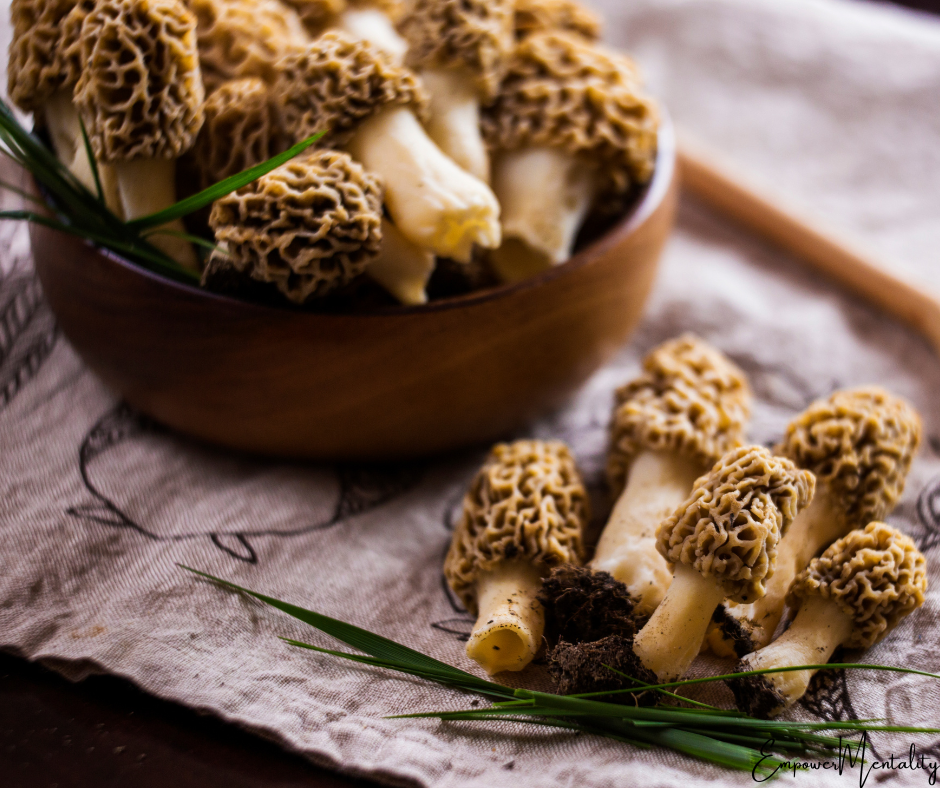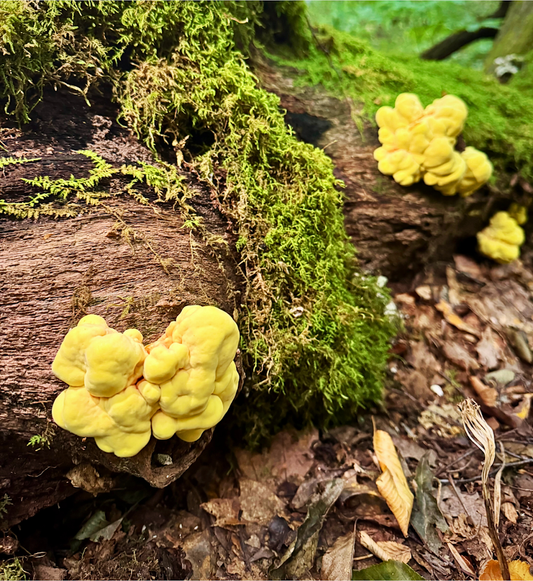
Morel Mushroom Hunting in North Carolina (Identification, Habitat, Tips & Culinary Use)
Morel mushrooms are a type of wild, prized edible fungus known for their distinctive honeycomb-like appearance, hollow interior, and rich, nutty and earthy flavor; they are considered a gourmet delicacy, often foraged in wooded areas, and are characterized by their cone-shaped cap with a network of ridges and pits. Due to their difficulty in cultivation, most morels are harvested from the wild.
Every year countless foragers eagerly head to the woods in search of these treasured mushrooms. Although they can be difficult to spot because of their blending colors - Morel hunting can become very fun an addictive!
Morels are very different from other species. They’re not easy to locate. Their growing season is short. And multiple specimens are required just to provide a single meal. Still, morels are among the most coveted of all wild fungi.

In western North Carolina, spring is still another 50 days away. But you can learn to improve your future chances of finding morels by doing a few things right now:
- Focus on learning to identify the trees they commonly grow near
- Learn new ecosystems and explore new areas
- Look for indicator mushrooms that grow in the winter that grow in the same ecosystems like Enoki, Oyster mushrooms or Dryad's Saddle
-
Check soil temperatures to ensure they're in the optimal range (around 50°F)
- Practice memorizing details of Morel mushrooms to help your eyes adjust when you'll be outside looking for them
Nature is full of signs and with spring coming, certain wild flowers will start to bloom very soon and many of them can be indicators that Morel season is around the corner:
-
Daffodils bloom from February through March in North Carolina. When Daffodils are coming to an end of blooming, it is usually a sign to get out and start looking for Morel mushrooms.


-
Morel mushrooms typically grow alongside wild Violets, as both appear in the spring when similar environmental conditions are present, making the blooming of wild Violets a good indicator that Morels might be nearby in wooded areas.


- Other wildflowers like Dandelions, Trillium, Dutchman's Breeches, and Trout Lily can also be used as markers for morel hunting.


MOREL MUSHROOM IDENTIFICATION
Morel mushrooms are easy to identify by their outstanding look - pitted caps, hollow interior, and smooth stems.
Morel mushroom identification.
-
CAP
Pitted: The cap has a honeycomb or sponge-like appearance with small hollows.
Shape: The cap can be conical, egg-shaped, elongated, or nearly spherical.
Color: Morels can be black, gray, yellow, or cream-colored. -
STEM
Smooth: The stem is unpitted and has a smooth or granular texture.
Cross-section: The stem can have a round, slightly flattened, or irregular cross-section profile. -
INTERIOR
Hollow: The morel is completely hollow from the tip of the cap to the bottom of the stem.
-
ATTACHMENT
Directly attached: The cap is directly attached to the stem. -
SIZE
Typical size: Morels are usually 1–4 inches tall, but can vary depending on the variety. -
SEASON
Spring: Morels are found in the spring.
MOREL HUNTING TIPS
Soil temperature
Look for days when the temperature is around 60°F and night temperatures are around 40°F (ground temperature should be in the 50°F). Testing the soil temperature is easy - just stick a thermometer into the ground.
Habitat
Look near Poplar, Elm, Oak, Ash, Apple, Black Cherry, Aspen and Sycamore trees.
Logged forest
Look for woods with rich soil that've been logged recently (maple-hardwood mixed woods). After a couple years, you will usually start to see mushrooms.
Burns and Forest Fires
Morel mushrooms, particularly a type called "burn morels", are commonly found in recently burned areas, as they thrive in the altered soil conditions after a forest fire, often producing large quantities of mushrooms that appear early in the spring after a fire, as one of the first signs of life returning to the burned area.
Elevation
Morels can be found on steep gradients, often with a stream or creek at the bottom or creek beds.
Mossy areas
Morels enjoy mossy areas and semi-freshly timbered areas.
Other tips
Look for morels in moist, but not muddy soil.
Look for morels near water, but not in swampy areas.
Look for morels under sycamores on the edges of floodplains and river banks.
Look for morels in disturbed areas, like those created by forestry management.
Look for morels in areas with decaying wood matter.
Check sightings maps to get a better idea when and where morels are in your area.
Hunt in the valleys early and the higher hillsides as the season progresses.
How many Morel mushrooms can you find on this picture? (Correct answer at the bottom of this blog!)
MOREL VARIETIES
"True morels" will have pitted caps with a honeycomb structure, there will never be folds, which could be Gyromitra or Verpa ("false morels"). They are always hollow in the center and will have caps completely connected to their stems.
Morchella Angusticeps - commonly known as Black Morel

Morchella Americana - commonly known as Blonde, Gold, or Yellow Morel

Morchella Tomentosa - commonly known as Grey Morel

Morchella Semilibera - commonly known as Half-Free-More
Look-a-Likes
There are a few different species that can be confused with true morels, but mostly when you hear the words "false or fake morel" it's going to refer to either Gyromitras or Verpas.
Gyromitra

Verpa

What to do after finding Morel mushrooms
It is good practice to harvest morels by slicing the stalks at ground level rather than pulling them up. Cutting protects the underlying network of fungal threads - the mycelium, that produced your mushroom - and will hopefully do so again next year. Inspect and smell your mushroom. Leave old or rotting finds to decompose in peace.
Never eat morels raw.
All wild mushrooms, including every species of Morel, can make people very sick if undercooked or eaten raw. A morel allergy isn't uncommon-even if they're cooked through.
Examples of Morels that are too old to eat.

Large mushrooms you may cut into halves or dehydrate.
If you find perfect young mushrooms, they can be cooked whole. Swish in cool water to clean, then dry on paper towels.
These are one of the best mushrooms you can dry. To dry them, put the mushrooms in a dehydrator at 145F and leave overnight until crisp. They will be good for years after dehydrating. After the mushrooms are dried, they can be reconstituted by covering with cold water, stock or milk.
Delicious Morel Recipes
Omelette with Morel mushrooms, Ramps and Cheddar cheese.
Morilles à la Crème (Morels with Cream) - Click for recipe
Pan Roasted Chicken with Morel Sauce - Click for recipe
Fried Whole Morel mushrooms - Click for recipe
Morel mushroom Pasta - Click for recipe 
How many Morel mushrooms did you find on this picture? The correct answer is 4.



